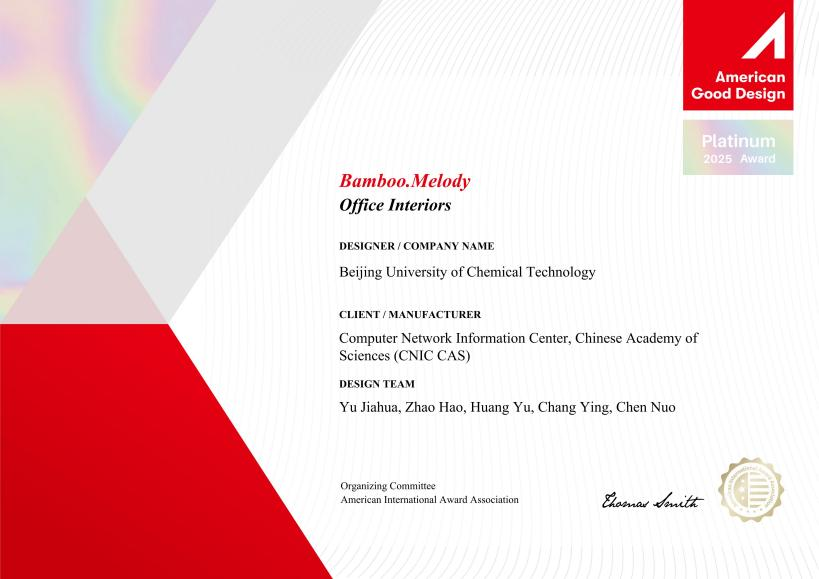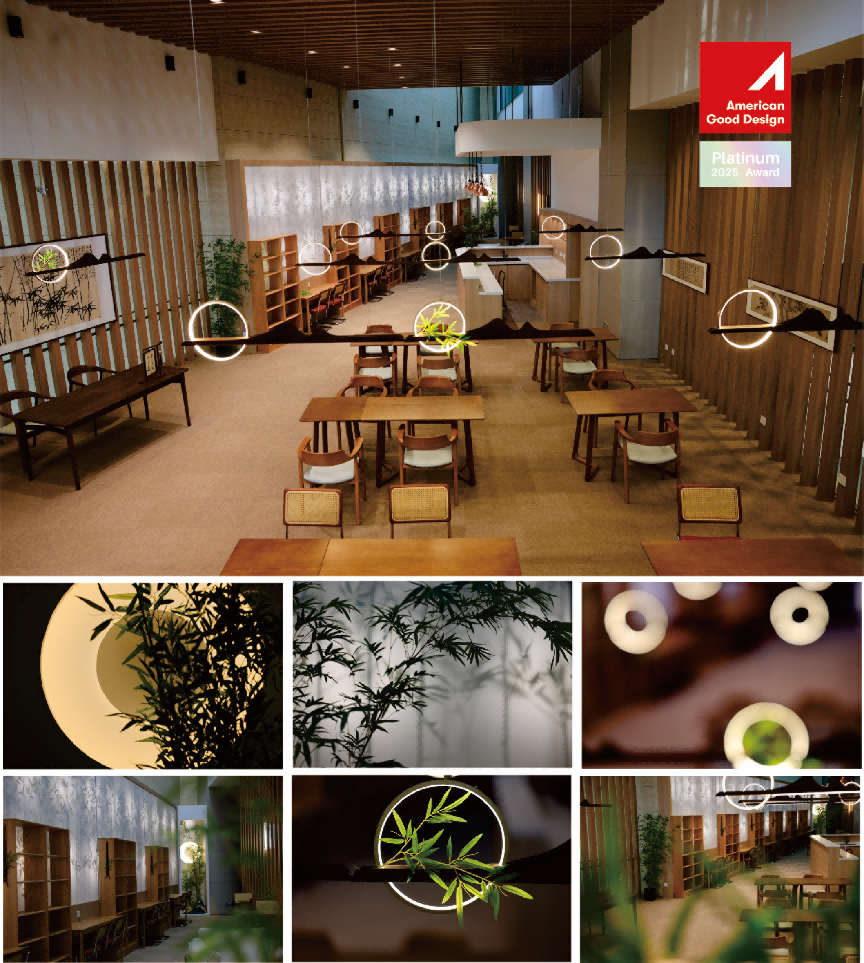Recently, the official list of winners for the 2025 American Good Design Award — a prestigious authority in the global design field — was officially unveiled. “Bamboo Melody,” the public space renovation project of the Computer Network Information Center of the Chinese Academy of Sciences (CNIC CAS) led by the team of Associate Professor Yu Jiahua from the Department of Art and Design of Beijing University of Chemical Technology, stood out from over 10,000 global entries. Relying on its groundbreaking material design innovation, profound cultural connotation and excellent cost control, this design work claimed the highest honor in the award’s “Interior Architecture and Interior Design” category: the American Good Design Platinum Award.!

The American Good Design Award is among the world’s most influential design competitions. Its aim is to discover outstanding designs globally and provide a world-class platform for exceptional designers to showcase their works. The selection criteria cover multiple dimensions including creativity, technological advancement, sustainability and social value — the award is exclusively bestowed on design masterpieces that "demonstrate extraordinary attainments in art and technology and exert a significant positive impact on society." The jury of the award consists of distinguished design experts, design directors and business founders from diverse fields around the world, and a rigorous confidential evaluation system is adopted to ensure fairness. The Platinum Award is specially established for the most groundbreaking works in the industry; in 2025, less than 0.5% of global entries obtained this certification!

As a public space renovation project for the Computer Network Information Center of the Chinese Academy of Sciences, “Bamboo Melody” is dedicated to integrating natural and humanistic imagery into the modern scientific research atmosphere, creating a unique tranquil space for scientific researchers. Within the limited area, the design incorporates the symbol of “bamboo,” blending the elegance of nature with the nobility of culture, and providing researchers with a place to embrace inner peace and reflect on culture. A relevant person in charge of the Computer Network Information Center of the Chinese Academy of Sciences highly praised the project’s outcomes: “The design of the teacher-student team from Beijing University of Chemical Technology not only meets our functional needs for public spaces but also embodies profound cultural heritage. This design is not only a poetic metaphor for the spirit of scientific research but also an innovative interpretation of the contemporary value of traditional culture.”



